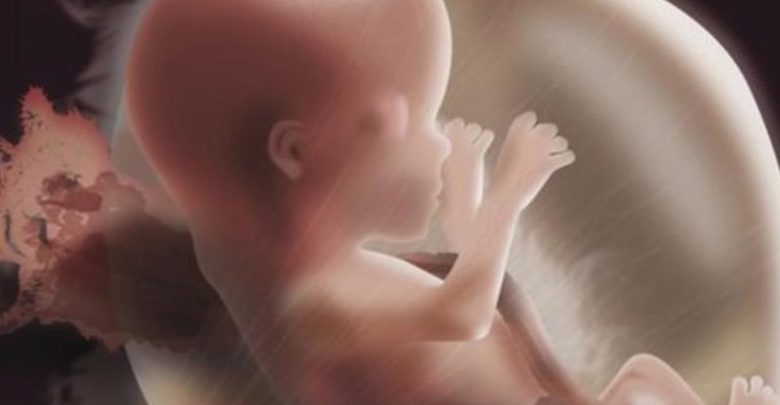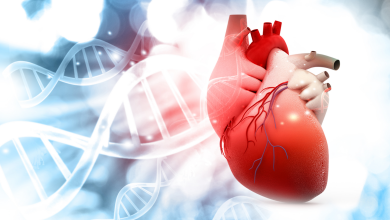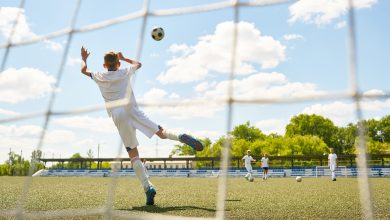
Why Do Babies Kick in the Womb?
لماذا يركل الجنين بطن أمه؟
The first time a pregnant woman feels her baby kick can be surprising — a sudden reminder that the tiny creature growing inside her has a mind of its own. But why do babies kick?
Though the womb is a tight space in which to exercise, it turns out that those kicks are vital for the baby’s healthy bone and joint development, an expert told Live Science.
Fetuses begin moving in the womb about as early as 7 weeks, when they slowly bend their necks, according to a review paper published in the journal Ultrasound in Obstetrics & Gynecology. As the babies grow, they gradually add more movements to their repertoire, such as hiccupping, arm and leg movements, stretching, yawning, and thumb sucking. But the mom won’t feel the bigger movements — such as kicks and punches — until 16 to 18 weeks into her pregnancy, when the baby is a bit stronger. [In Photos: How Babies Learn]
Babies need their exercise, too
An entire field of research is dedicated to figuring out whether the baby is in control of its movement or if those movements are just a reflex, said Niamh Nowlan, a bioengineer at Imperial College London. “Early movements are likely to be purely reflex,” Nowlan told Live Science in an email, but as the movements become more coordinated, “it’s likely the brain is in control of how much and when the baby moves.” (Reflexes, on the other hand, come from the spinal cord and don’t require input from the brain.)
Scientists may not know for sure if the movements are voluntary or involuntary, but Nowlan said the research is clear that movement is important. “The baby needs to move [in the womb] to be healthy after birth, particularly for their bones and joints,” she said. In a review she published in the journal European Cells and Materials, Nowlan described how a lack of fetal movement can lead to a variety of congenital disorders, such as shortened joints and thin bones that are susceptible to fracture.
For pregnant women wondering if their baby is too kicky, or not kicky enough, Nowlan said there’s no established amount of normal fetal movement during pregnancy. “Pregnant women are told to look out for significant changes in movements, which is quite vague advice, but it’s the best that can be given at the moment,” she said.
That’s because it’s difficult for scientists to study fetal movements, because the only way to measure them is in the hospital and it can be done for only a short period at a time. To get around this problem, Nowlan and her colleagues are working on developing a fetal-movement monitor that the mother can wear during her normal daily activities. The researchers tested the monitor on 44 women who were 24 to 34 weeks pregnant and could accurately detect breathing, startle movements and other general body movements. Their results were published in the journal PLOS One in May.
One study, published in 2001 in the journal Human Fetal and Neonatal Movement Patterns, found that boys may move around more in the womb than girls. The average number of leg movements was much higher in the boys compared to the girls at 20, 34 and 37 weeks, that study found. But the study’s sample size was small, only 37 babies, so Nowlan and her colleagues are hesitant to claim there’s a relationship between gender and fetal movement.
Fetal kicks can pack a punch
It’s unlikely that each woman will feel the same thing when her baby starts kicking.
“Different women experience the sensation quite differently, and sensations can vary between pregnancies,” Nowlan said. In her own two pregnancies, for example, she said she was much more sensitive to the movements of her second child compared to those of her first. “I could always tell where my son’s feet were, whereas that wasn’t really the case for my first,” she said. She hypothesized that this variation could have arisen because the womb muscles are more stretched out after the first pregnancy, a topic she’s now studying.
The most-pronounced movements mothers will feel are the baby’s kicks. A recent study from Nowlan and her colleagues, published in the Journal of the Royal Society Interface in January, found that the impact of the baby’s kick increases from 6 lbs. (2 kilograms) of force at 20 weeks to 10 lbs. (4 kg) of force at 30 weeks. After that point, the baby’s kick force decreases to just under 4 lbs. (2 kg). The scientists said they suspect the decrease in movement occurs because there is less room for the baby to move around.
But babies in the womb are doing more than just kicking. By 15 weeks, the baby is also punching, opening and closing its mouth, moving its head, and sucking its thumb. A few weeks later, the baby will open and close its eyes. But the mother will feel only the major movements: kicking, punching and maybe big hiccups.
The babies also do “breathing movements,'” said Nowlan. While the baby isn’t actually breathing air, it will perform the same movement, just with amniotic fluid. Nowlan explained that babies who don’t perform this movement often have trouble breathing once they’re born, because they haven’t built up their chest muscles.
Feeling a baby moving and kicking in the womb might be a weird sensation, but it’s simply a sign of healthy development.
source: livescience.com
من أبرز أعراض الفترات الأخيرة من الحمل أن يزداد الجنين نشاطا في الرحم عبر عملية الركل، ولكن ما السبب وراء ذلك؟ دراسة حديثة تبيّن مدى أهمية الركل في تطوير القدرات العقلية والجسدية للجنين.
ففي دراسة طبية أعدتها كلية جامعة لندن بالتعاون مع مستشفى الكلية ونَشرت نتائجها مؤخرا مجلة “ساينتيفيك ريبورتس” العلمية، تبين أن ركلات الجنين داخل رحم الأم قد تسمح له بتشكيل “خريطة جسدية” لنفسه، وتمكنه في النهاية من استكشاف البيئة المحيطة به.
وقام الباحثون بقياس موجات الدماغ التي تصدر عندما تقوم الأجنة بالركل بأطرافها، وتم قياس الموجات الدماغية للأطفال باستخدام تخطيط أمواج الدماغ. وشملت 19 طفلا من حديثي الولادة تتراوح أعمارهم بين 31 و42 أسبوعا.
وتشير النتائج إلى أن ركلات الجنين أثناء المراحل الأخيرة من الحمل -وتحديدا الثلث الأخير منه- تساعد في نمو مناطق بالمخ تتعامل مع المدخلات الحسية، وهي الطريقة التي يطور بها الجنين الإحساس بجسده.
ولاحقا تختفي الموجات الدماغية السريعة التي تثيرها الحركة عندما يبلغ الطفل بضعة أسابيع.
ويقول لورينزو فابريزي، طبيب علم الأعصاب ووظائف الأعضاء والصيدلة بكلية جامعة لندن، وأحد المشاركين بإعداد الدراسة “من المعروف أن الحركة العفوية وردود الفعل اللاحقة من البيئة المحيطة خلال فترة النمو المبكرة ضرورية لرسم خرائط المخ لدى حيوانات مثل الجرذان. وقد أظهرنا أن ذلك قد ينطبق على البشر”.
أما كيمبرلي وايتهيد، طبيبة علم الأعصاب ووظائف الأعضاء والصيدلة بالكلية، فتقول “نعتقد أن النتائج لها آثار على توفير بيئة مثالية للمبتسرين داخل المستشفى حتى يتلقوا المدخلات الحسية المناسبة. فمثلا، من الأعمال الروتينية بالفعل للرضع وضعهم بأسِرّتهم ليناموا، حيث يسمح لهم ذلك بالشعور بوجود سطح عندما يركلون بأطرافهم، كما لو كانوا ما زالوا داخل الرحم”.



